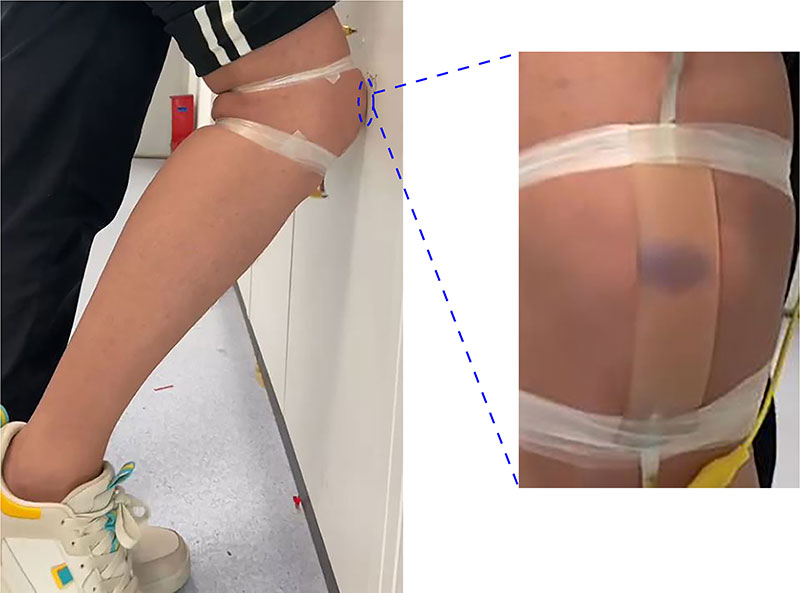When someone bumps their elbow against a wall, they not only feel pain but also might experience bruising. Robots and prosthetic limbs don’t have these warning signs, which could lead to further injury. Now, researchers at the Chinese University of Hong Kong have developed an artificial skin that can effectively indicate if damage has occurred, in the same way that our skin bruises naturally. The researchers reported their invention in ACS Applied Materials & Interfaces.
Related Artificial Skin Could Enhance Sense of Touch and Provide Real-Time Haptic Feedback
Scientists have developed many different types of electronic skins, or e-skins, that can sense stimuli through electron transmission. However, these electrical conductors are not always biocompatible, which could limit their use in some types of prosthetics. In contrast, ionic skins, or I-skins, use ions as charge carriers, similar to human skin. These ionically conductive hydrogels have superior transparency, stretchability and biocompatibility compared with e-skins. Qi Zhang, Shiping Zhu and colleagues wanted to develop an I-skin that, in addition to registering changes in electrical signal with an applied force, could also change color to mimic human bruising, reports ACS.
The researchers made an ionic organohydrogel that contained a molecule, called spiropyran, that changes color from pale yellow to bluish-purple under mechanical stress. In testing, the gel showed changes in color and electrical conductivity when stretched or compressed, and the purple color remained for 2–5 hours before fading back to yellow.

Then, the team taped the I-skin to different body parts of volunteers, such as the finger, hand and knee. Bending or stretching caused a change in the electrical signal but not bruising, just like human skin. However, forceful and repeated pressing, hitting and pinching produced a color change. The I-skin, which responds like human skin in terms of electrical and optical signaling, opens up new opportunities for detecting damage in prosthetic devices and robotics, the researchers say.
The authors acknowledge funding from the National Natural Science Foundation of China, the Program for Guangdong Introducing Innovative and Entrepreneurial Teams, Shenzhen Science and Technology Program, 2019 Special Program for Central Government Guiding Local Science and Technology Development: Environmental Purification Functional Materials Research Platform, Shenzhen Key Laboratory of Advanced Materials Product Engineering and the CUHK-Shenzhen Presidential Fund.
Related Artificial Electronic Skin Senses Pain, Temperature As Fast As Human Skin
The American Chemical Society (ACS) is a nonprofit organization chartered by the U.S. Congress. ACS’ mission is to advance the broader chemistry enterprise and its practitioners for the benefit of Earth and all its people.












